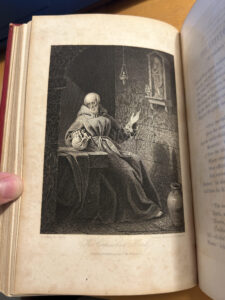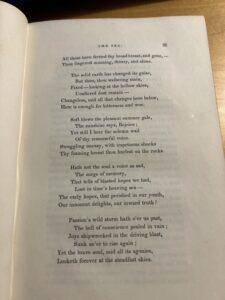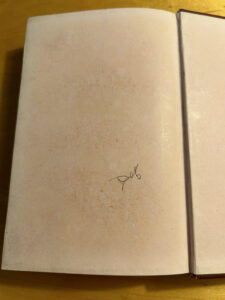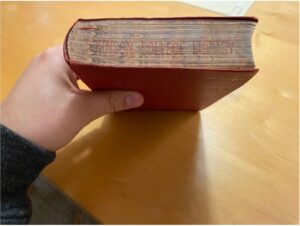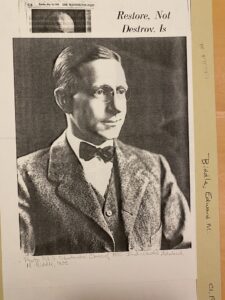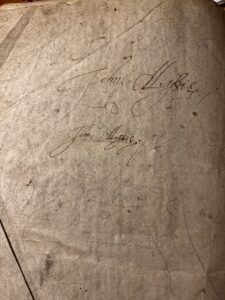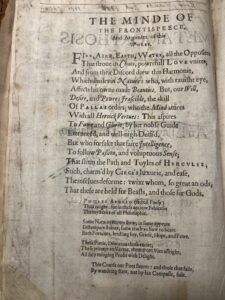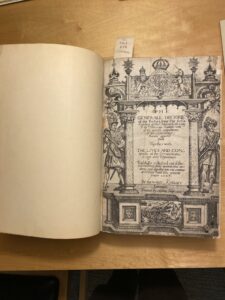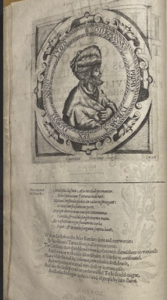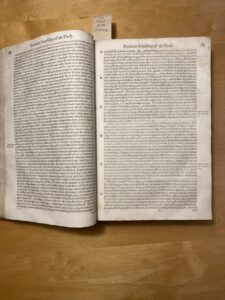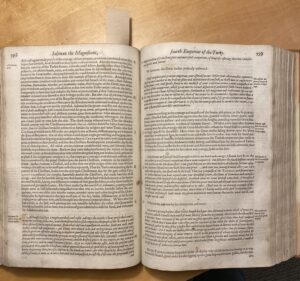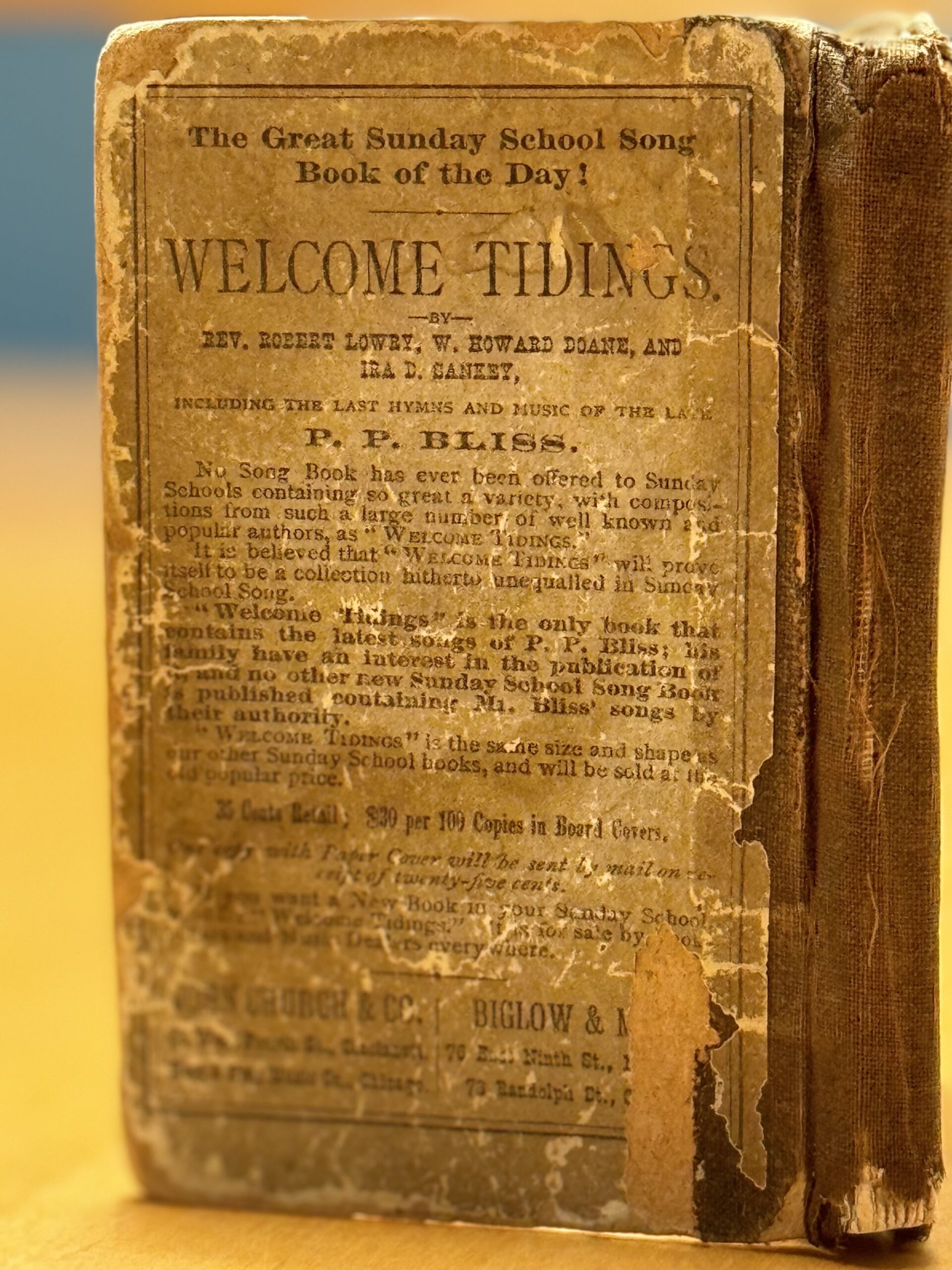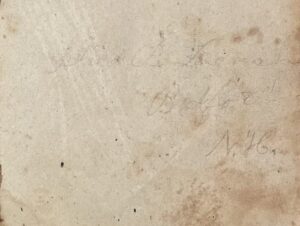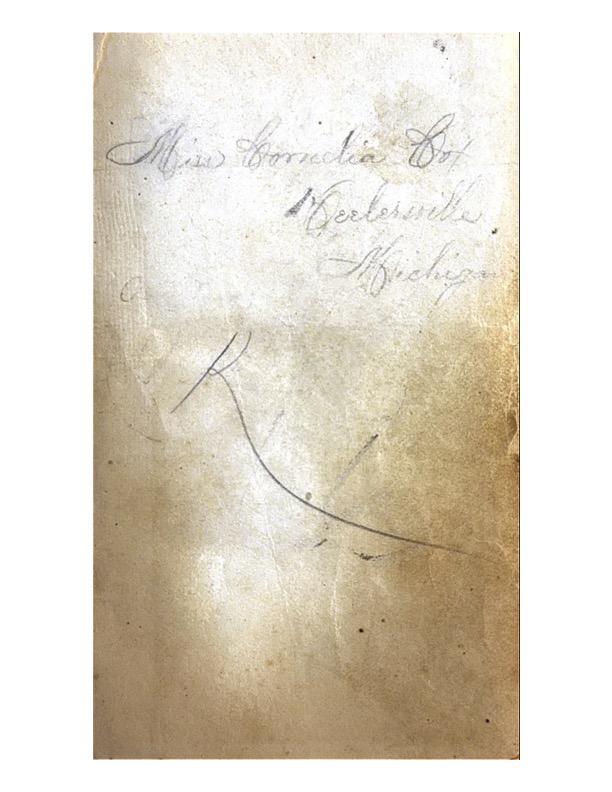
Fig. 1 The spine
Isaiah Thomas’s book, The History of Printing in America with a Biography of Printers, and an Account of Newspapers which is prefixed with a concise view of The Discovery and Progress of the Art in Other Parts of the World, is a primary resource perfect for anyone interested the in the extensive history of publishing and printing from its origins in China to early America. The copy I will use has many signs of usage and wear, such as water and ink stains, dog-eared pages, and spine breakage. These marks and the worn appearance portray the book’s 214-year-old battle with time and the elements, encouraging me to observe and understand its physical features.

FIg. 1 The cover
The book was printed in 1810 in Worcester Massachusetts by The Press of Isaiah Thomas and the printer, Isaac Sturtevant. There are 496 pages, and the copy has a length of 21.5 cm, a width of 13 cm, and a height of 4 cm. Tightly sewn together in a white thread—with snippets of thread seen between several of the pages—make opening the book to lay it flat on a table difficult without adding more breakage to the spine. A brown leather, made of calf, covers the spine and corners of the bookboard. Along the spine, there is simple gilded lettering of the shortened title, “The History of Printmaking,” in all capital letters and spaced out evenly along the spine with seven pairs of horizontal lines, and the number one signifying the book is only the first in its volume. Both the front and back bookboards are edge-worn and covered with marbled paper–the original color lost to aging and moisture, the marbling appears as brown drops with black and orange mixed in. The board remains straight and unbowed. The spine has a closed tear on the front bottom of the cover with a crease following the damage along the book’s spine. It’s difficult to hide the tears and damage the book has experienced within the past two hundred years.

Fig. 3 Front endpage
Opening the book to the first end page reveals the bookplate with the only piece of handwriting within the book, belonging to Charles Wesley Pitman, once a member of Congress, who gave the volumes to the Belles Lettres Literary Society, which hosts readings and workshops and is the oldest student organizations at Dickinson College, in 1837. The writing on the bookplate names a student and librarian at Dickinson College, Joseph Salkeld. The label and catalog number on the opposite side of the front cover hid the original handwriting, likely written before the addition of the bookplate since they both contain the same information, which is repeated once again on the next page. Besides the handwritten text, the once plain white endpaper is browned and wrinkled from moisture with a black sponge-like pattern reflected on both sides of the pages. Thomas dedicates History of Printmaking to “The President and other Officers and Members, Of the American Philosophical Society, in Pennsylvania:— and, the Presidents, Counselors and other Members of the American Academy of Arts and Sciences, In Massachusetts.” (Thomas iii-iv) on the pages following the handwritten work.
The pages themselves are readable and remain stitched together. However, similar to the end paper, the whole text block is water-stained from the bottom of the pages to the middle–leaving a brown border between the water-damaged and undamaged sections of the paper. Aging also appears in the brown tint of the fore-edge. The pages surrounding one fold-out plate between pages 70 and 71, made of a different type of paper and written in Latin, imprinted a “ghost” text of its own words and the pages touching it—likely due to either the quality of the paper or ink. There is another stain, not from water, but from blue ink dropping and bleeding onto pages 136 through 162–luckily avoiding the text and landing within the margins. The text is in a Scotch Roman typeface, which notably has thicker vertical and diagonal lines mixed with a few thin vertical lines and curved

Fig. 3 Ink stain
serifs—a common typeface in 19th-century America. There is enough space in the margins and foot of the paper to take notes in—yet the margins only contain ink stains. Some signs of usage are the creases left behind from readers dog-earring the corners of the pages, the ink stain, and the spine breakage. At the head of the pages, there are page numbers and the title of the chapter completely in capital lettering. The pages felt rough almost as if they were a fine grade of sandpaper, and the grain went parallel with the spine, which is understandable considering it is easier to fold with the grain rather than against it. Flipping through the pages of the text is difficult with the stiffness of the paper. The moisture and the aged pages over the centuries created an interesting odor. Although the full-text block remains legible and in good shape for its age, the pages have a harsh texture and stains.

Fig. 4
My interest in Dickinson’s copy of The History of Printmaking started with the marbled cover and its subject. In high school, I enrolled in a class called Art of the Book and afterward continued with an independent study for the rest of the year, in which I learned to make different binding techniques and book forms. My growing interest in the process of making books drew me to the marbling of the paper used for the cover–not only is it aesthetically pleasing, but the simple process of dripping and manipulating colorful inks in water to create beautiful patterns is unlike other art mediums I have encountered. The title itself piqued my interest as well since I also, although not on the same level as my bookbinding, made prints. Despite my experience, I was never able to explore these arts through a historical perspective, understanding the context and culture behind books today, and I look forward to deepening my appreciation and understanding of books and prints with the help of Isaiah Thomas’s History of Printmaking.







